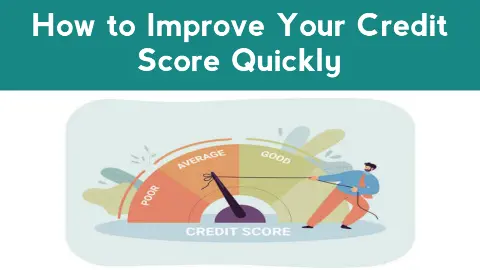Introduction: Why Your Credit Score is Your Financial Resume
Think of your credit score as your financial reputation in a number. A strong score (typically above 750 in India) is your key to unlocking lower interest rates on loans, better credit card offers, and even smoother approvals for rentals and mobile connections. If your score isn’t where you want it to be, don’t worry—with focused effort, you can see significant improvement in a matter of months.
Here is a proven, step-by-step plan to elevate your credit health quickly and effectively.
Your Action Plan for a Rapid Credit Score Boost
1. Audit Your Credit Report for Errors
You can’t fix what you don’t know. Obtain your free report from major credit bureaus like CIBIL, Experian, or Equifax.
- What to Look For: Incorrect personal details, accounts you never opened, late payments you actually made on time, or closed accounts still showing as open.
- Action: File a formal dispute with the credit bureau to correct any inaccuracies. Removing a single error can sometimes boost your score by 20-50 points.
2. Master Your Credit Utilization Ratio
This is the second most important factor in your score. It’s the percentage of your total available credit you’re using.
- The Golden Rule: Keep your overall utilization below 30%. For optimal scoring, aim for 7-10%.
- Quick Win: Pay down your balances before the statement generation date. If you have a ₹1,00,000 limit, ensure your statement balance is no more than ₹7,000-₹10,000. This shows lenders you’re not over-reliant on credit.
3. Never Miss a Payment (Again)
Your payment history is the single largest component of your credit score. A single 30-day late payment can stay on your report for years.
- The Solution: Automate your finances. Set up auto-debit for at least the minimum payment on all your credit cards and loans. This is your safety net against forgetfulness.
4. Strategically Request a Credit Limit Increase
If you have a good repayment history with a card issuer, request a higher credit limit.
- How It Helps: If you spend the same amount but have a higher limit, your utilization ratio instantly drops. For example, if you consistently spend ₹15,000 and your limit increases from ₹50,000 to ₹1,00,000, your utilization falls from 30% to a much healthier 15%.
- Caution: Only do this if you can trust yourself not to increase your spending with the new limit.
5. Become an Authorized User (The “Piggybacking” Strategy)
A family member with a long, impeccable credit history can add you as an “authorized user” on their credit card.
- The Benefit: The card’s entire positive payment history can be added to your credit file, giving your score a quick lift.
- Critical Note: This is based on trust. Ensure the primary user has perfect payment habits and low utilization, as their mistakes will also hurt your score.
6. Settle Outstanding “Collection” Accounts
Unpaid small debts sent to collection agencies are major red flags.
- Action Plan: Prioritize paying these off. While the record may not disappear immediately, most modern scoring models see a “paid collection” as much better than an “unpaid” one, often resulting in an immediate score jump.
7. Space Out Your Credit Applications
Every time you apply for a new loan or card, a “hard inquiry” is recorded on your report. Too many in a short period (6-12 months) makes you look desperate for credit and lowers your score.
- Strategy: Do your research beforehand and only apply for credit you genuinely need and are likely to get. When rate shopping for a specific loan (like a car loan), try to do all your applications within a focused 14-45 day period, as they may be counted as a single inquiry.
From the Trenches: A Real-Life Success Story
Priya’s Challenge: With a CIBIL score of 620, Priya’s home loan application was rejected. She felt stuck.
Her 90-Day Turnaround Plan:
- She obtained her report and disputed an old credit card that wasn’t hers (gained 25 points).
- She used savings to pay down her largest credit card balance from ₹45,000 to ₹10,000 (on a ₹60,000 limit), slashing her utilization (gained 40 points).
- She set up auto-pay for all her bills to ensure no future late payments.
- She paid off a forgotten ₹3,000 mobile bill that was in collections (gained 15 points).
The Result: In just three months, Priya’s score rose to 680. After six months of consistent on-time payments, it reached 725, making her eligible for the home loan she needed.
The Bottom Line: Consistency is Key
Improving your credit score is a marathon, not a sprint, but you can see remarkable progress in the first few laps. Focus on the fundamentals: pay on time, keep balances low, and be strategic about new credit.
Your credit score is a living thing that responds to your financial habits. By taking control and implementing these steps, you’re not just boosting a number—you’re building a stronger financial future.
Have you successfully improved your own credit score? Share your best tip in the comments to help others on their journey!






